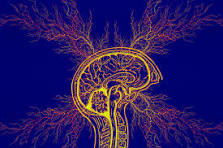Introduction:
ADHD is associated with problems controlling impulses, regulating feelings, and paying close attention. Some people with ADHD can use unhealthy coping mechanisms, like emotional eating, to cope. This article explores the link between ADHD and emotional eating, and sheds some light on the importance of relaxation and treatment techniques in breaking the cycle.
Understanding emotional eating:
Emotional eating is when you eat food to satisfy an emotion, not hunger. Emotional eating is more common in people with ADHD due to the emotional dysregulation that comes with the disorder. Emotional eating can lead to a cycle of stress, guilt and overeating. ADHD sufferers can be even more challenged by this.
ADHD and Emotional Dysregulation:
Impulsive Food Choices: People who have ADHD or impulsive tendencies can find it difficult to make healthy food choices. Certain foods can provide immediate relief to those experiencing emotional distress.
Executive Function Issues – Executive function deficits can be associated with ADHD. They can impact planning, decision making and organization. Food choices are included. This can result in irregular eating habits, dependence upon convenience foods, and difficulty adhering to a balanced diet.
ADHD stressors, such as academic or occupational problems, can cause emotional eating. Stress-induced emotional eating is a temporary escape from overwhelming emotions. However, it can lead unhealthy coping mechanisms.
Breaking the cycle of addiction through treatment
Behavior Therapy is the cornerstone for treating ADHD. It can also be used to treat emotional eating. The therapeutic interventions aim to identify triggers, promote mindful eating and develop coping skills. This approach empowers individuals to make better choices about food and manage their emotions.
Cognitive-Behavioral Therapy (CBT) is a treatment that helps people change their negative food thoughts when applied to emotional eating in the context of ADHD. CBT can help develop healthier eating attitudes and habits by addressing distorted views about food and emotions.
Medication Management: For some ADHD patients, managing medication is essential to reduce impulsive behaviors and improve emotional regulation. Indirectly, medications that reduce ADHD symptoms can also help to reduce emotional eating.
Relaxation Techniques:
Mindful eating involves paying attention to your senses while eating. Taste, texture, and smell are all included. Individuals with ADHD who incorporate mindfulness techniques into their meal preparation can become more aware about the emotional triggers which influence their eating.
Reduce emotional stress by engaging in stress-reducing activities such as yoga, meditation or deep breathing. These relaxation techniques are a great way to deal with emotions and stress.
Regular Exercise: Regular physical activity can help reduce stress and manage ADHD symptoms. Exercise regulates mood and improves sleep. It also allows emotional expression. Exercise reduces the need for food to cope with stress.
Healthy Coping Techniques
Emotional Awareness: The treatment of emotional eating begins with emotional awareness. Understanding the link between eating and emotions will help people with ADHD recognize their emotional triggers.
Building Coping Mechanisms: Treatment involves building alternative coping mechanisms for managing emotions. Journaling, speaking with a therapist, or engaging in creative activities as outlets for emotional expression can reduce the dependence on food to provide comfort.
Dietary counseling: A dietitian or nutritionist’s guidance can help people with ADHD maintain a healthy eating pattern. By addressing specific nutritional needs, nutrition counseling can help people make informed decisions about food.
Create a supportive environment:
Social and Family Support: A supportive environment is crucial for breaking the cycle. Families and friends play a vital role in reinforcing good eating habits, promoting emotional well-being, and reinforcing positive behaviors.
Education & Advocacy By educating friends, family and educators about emotional eating, ADHD, and possible links, you can create an environment that is more accepting and supportive. Advocating ADHD awareness can help reduce stigma and encourage individuals to openly discuss their challenges.
Conclusion:
To break the cycle, an integrated and multi-dimensional approach is needed. Cognitive-behavioral therapy, behavioral therapy, and medication management are all effective treatment strategies that address the underlying ADHD symptoms and promote healthy coping mechanisms. Relaxation techniques, healthy coping strategies, and a supportive atmosphere can enhance the effectiveness of treatment. People with ADHD who are able control their emotions, and have a healthier relationship with food can break the cycle. It leads to a better approach to nutrition, and to overall wellbeing. In order to improve treatment and promote holistic wellbeing, research and awareness is essential.

